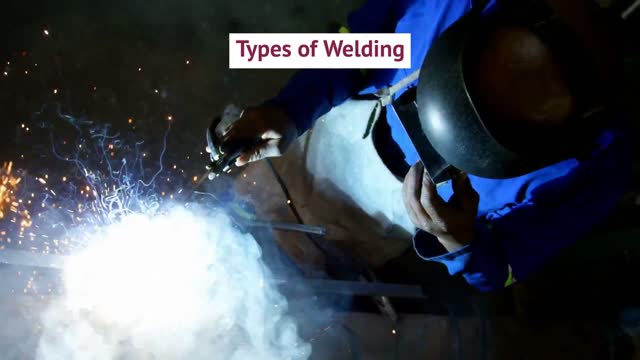A common fabrication method, modern welding utilizes heat, pressure, and electrical current to efficiently and effectively join components together. Since its inception thousands of years ago, welding has experienced numerous process advancements to enable varying weld strengths and aesthetics, capitalize on automated technologies, and combine differing materials.
Understanding the various types of welding and which one is best for your application is necessary for reliable quality, long-lasting products, and satisfied customers. The top four industries that require custom welded components include OEM parts, medical supplies, automotive, and furniture. Other industries include:
- Aerospace
- Consumer goods
- Defense
- Electrical
- Entertainment
- Foodservice
- Lab and medical equipment
- Lawn and garden
- Manufacturing
- Military
- Point-of-purchase displays
At Rockford Specialties Inc., we’re here to help. Our company offers precision MIG, TIG, resistance, and robotic welding services to supply custom, durable welded parts to the above industries and more. Our highly trained staff are backed by decades of technical expertise and the best welding technologies available to create superior welds that meet your specifications and tolerances.
MIG Welding
As one of the most common welding types, metal inert gas (MIG) welding uses a consumable wire serving as the electrode and filler material. This electric arc welding process passes the wire through a welding gun to meet the weld pool. The heat that the arc creates between a material’s surface and the electrode melts the two, dripping molten metal that ultimately generates the weld and joins two components. The process also utilizes a shielding gas around the wire to safeguard the workpiece or filler against potential reactions to their environment.
MIG welding is ideally suited for larger and thicker materials. While MIG welding is one of the less refined welding types, it is much faster and more affordable than TIG welding, resulting in shorter production times and lower costs. It’s also a simpler welding process to learn and generates welds with minimal cleaning or finishing requirements. Materials compatible with MIG welding include:
- Aluminum
- Carbon steel
- Stainless steel
For more accurate, strong, and clean welds, however, TIG welding is preferable.
TIG Welding
Similar to MIG welding, tungsten inert gas (TIG) welding uses an electrical arc and shielding gas. TIG welding’s electrode is non-consumable and made from tungsten, a metal with impressive tensile strength. A constant flow of an external gas supply like argon or helium from a tank helps protect a weld, so it’s better to carry out TIG welding processes indoors.
If using filler, you must hand-feed it into the weld pool. However, filler material is optional for this type of welding. Using a fusion process, the heat from the fixed tungsten rod creates an arc that causes the two base materials to melt and fuse together, producing a fine, attractive weld with optimal strength.
Like MIG welding, typical materials include:
- Aluminum
- Carbon steel
- Stainless steel
This electric arc welding process is ideal for thin materials rather than thick. Also, TIG welding requires highly specialized training and is much slower than MIG welding. Automotive and furniture manufacturing are among the industrial applications for this method.
Resistance Welding
Resistance welding uses pressure application and electrical current passing between two overlapping metal bases. The thermo-electric welding technique results in resistive heating, which creates enough heat at the welding joint to make a molten pool that binds the base metals together, forming a weld nugget. Once an operator starts the process, resistance welding and its current control are automatic, with mechanical, hydraulic, or pneumatic systems handling the necessary pressure application. Automated resistance welding equipment is programmed to manage movement, the amount of current and pressure, and the length of time during which the current passes through the metals. These are three factors affecting weld quality and strength.
As proper equipment setup is key to the quality-determining factors, the welding operator’s knowledge of programming and ability to adjust the machine and adhere to weld schedules is important. Resistance welding is extremely cost-effective because it does not require additional materials to create a bond between two components and it enhances output. It’s ideal for applications requiring long production runs with its ability to create high-quality, repeatable welds. The aerospace, appliance, and automotive industries commonly use resistance welding, as well as pipe manufacturing and other industrial projects.
This welding method is suitable for a range of resistive and conductive metals, including stainless steel. The several forms of resistance welding detailed below primarily differ based on a weld electrode’s type and shape.
Projection Welding
Projection welding creates localized welds at predetermined spots. Projections, intersections, or embossments determine the weld contact points where the heat generation focuses. When the weld current creates enough resistance at that point, the projections fall and make a weld nugget.
Flash Welding
Flash welding is a process that uses flashing action to create resistance and push two workpieces together. At multiple small points of contact in between workpieces, a current of extremely high density generates this flashing action. Once flashing begins, the workpiece experiences force at a set point to join the materials together at a controlled rate. The force causes a rapid upset, which rids a weld of impurities and oxides.
Upset Welding
Upset welding is comparable to flash welding. This method works well for applications in which no flashing takes place, with two workpieces already having firm contact. The upset welding process applies pressure prior to the start of the current, and it holds that pressure throughout the welding process.
Robotic Welding
With technological advancements in recent years, robotic welding — also known as automated welding — offers businesses a faster, more efficient way to create welds with improved accuracy. Rather than people handling the welding tasks themselves, mechanical, programmable robots can now perform them instead. Benefits of robotic welding include:
- Durable, accurate welds. Robotic welding generates quality welds as automation allows for optimal weld integrity through electronic welding controllers.
- Repeatable results. Automated robots will carry out the welding process the same way each time for uniform, repeatable results.
- Improved output. Robotic technology doesn’t require breaks or vacations and is capable of faster production than human employees without sacrificing weld quality and accuracy.
- Reduced scrap waste. With high accuracy comes the added benefit of less material waste.
- Increased workplace safety. As robotic technology handles the welding tasks, this promotes a safer working environment for employees with less risk of burns or other hazards.
Work With Rockford Specialties for Custom Welding Projects
Working with an expert welding company is essential for quality results and helps ensure the optimal welding technique is used for your application. At Rockford Specialties, we have over 40 years of experience providing high-quality custom welded components. Our well-trained staff offers MIG welding, TIG welding, resistance welding, and robotic welding services using the latest technology.
To meet the needs of diverse industries, we have capabilities for both short and long production runs with competitive pricing, ensuring fast turnaround times from the initial prototype to final delivery. Our dedicated team provides in-house design and engineering services, and we complete your parts with high-quality edging and custom finishing options. Rockford Specialties utilizes sturdy packaging in our shipping services so that your parts will arrive safely. This is all part of our commitment to stringent quality control in our processes and end products.
Let the team at Rockford Specialties meet your unique part specifications and exceed your expectations. Contact us today to learn more about our custom welded components.

